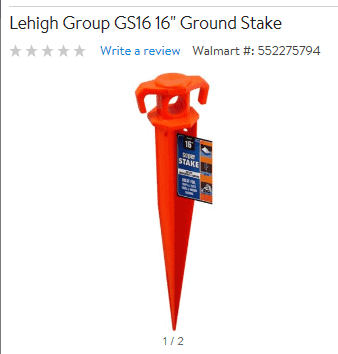I've got to measure the shoreline of a tidal waterfront parcel today. The first setup is going to be in a muddy cove at low tide. It's not my first time setting the instrument in a so-so area, done plenty of swamp setups over the years. I haven't done too many with the Leica 1203. My older Topcon GTS 3B was not nearly as sensitive to movement near the gun as the Leica.
Any advice on setting up the instrument?
I think I've read about setting the tripod legs on stakes and that's probably what I will try first, just gonna need some long stakes. Any other ideas?
Very simple. Bring 3 pieces of conduit, or heavier pipe. Drive them into the swamp. Cut off w hacksaw, when driven in deep enough, to be real solid.
You can use sharpened 2x4's too. Big sledge hammer.
Dont forget the rubber boots for the i-man.
N
Can't you set control on terra firma and cut-in the mud-bound points?
I can't imagine putting my 1203 into that situation and expecting it to behave positively. How big is the tide? Here it may go out enough (10'+) for the base to firm up a bit without intervention but even though, I probably would look for alternatives.
As Nate pointed out, drive stakes into the ground and possibly firm them by adding a top or side board to brace connect them together for more stability.
Basically build a platform that is stable enough to support your setup.
You can also add weights on top of the footpegs or along the legs to hold your tripod down to reduce vibrations and other forces that cause instability.
Tall lath driven down did the trick. Closed the sets easily. The setup had a bit more shake than I like to see, but we were able to get the low water shots. Next time I'm using the two by fours. I like that idea.
I know the 1203 can be finicky sometimes. Had an occasion when set on a dock, and a steady breeze and could only level it so well, it was a real pain to get it to measure, even in fast mode.
Dutch Hill makes a great set of legs for this type of stuff. Tundra Legs
I would use the 2x4 and then use lath and screws to link them together - I also would make it a short and mostly vertical setup
All the mud might move it a bit while walking around the setup
I use the Trimax tripods these days - the large feet make for good setups too
A strong second for the Dutch Hill Tundra Legs, or if you don't mind carrying a tripod that weighs a ton, Dutch Hill will make you a tripod with custom leg lengths. I have an eight foot, and twelve foot tall tripod made by them. A colleague had one made that was seventeen feet tall. He surveyed from a portable deer stand with it. He was fun to watch.
Essential - take some 3 ft lengths of 9x1 and put them down to stand on. That way you spread your load and minimise any disturbance to the instrument as you move around it. Remember to fix a short length of rope to one end (and put them down rope side up!) so that if they get stuck in the mud you can pull them free (or pull yourself in if you forget to stand on another plank whilst pulling)
Three 1" OTP (pvc would work but metal is better) driven in the mud to support your tripod.
Or use GPS.
I had to do a lot of photo control in southern Florida, sometimes in swamps and marshes. Low altitude stuff, 20 scale maps, 0.5' contours. I set two by fours in the mud, and put a pie tin on top for an aerial target. Most were vertical only, so we had to level to them. tried to keep all instrument setups on dry ground. when that was not possible we would pound in stakes to set the legs on. The only real problem was gators and snakes. Had a few scares with gators, didn't see many snakes. Always carried a 9 mm when working in the swamps. Never had to use it. Actually, the only snakes I saw (coral snakes) were when we would pick up a plywood target to survey a point and there would often be one or more under there. Also found a marijuana patch adjacent to a public housing project, but that is another story....




